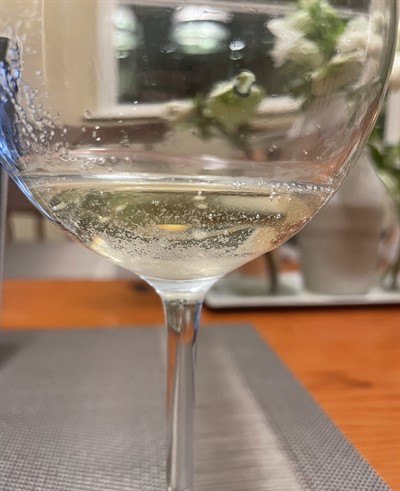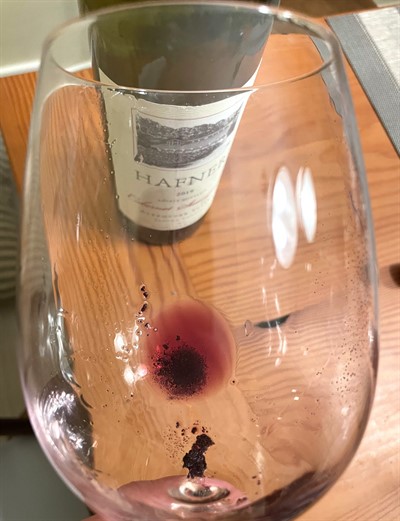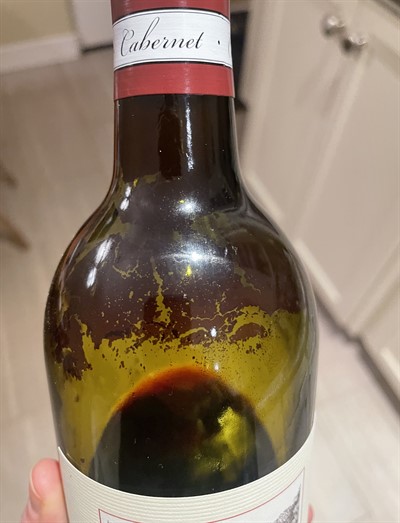Sediment in Wine
- March 8, 2024
We are often asked, “What is the sediment in my glass and why is it there?” As Master of Wine and Master Sommelier Gerard Basset explained, “They are harmless by-products of wine, and some equate their presence as a mark of quality, in that the wine has not been overly manipulated in the cellar.”
Tartrate crystals, often referred to as “wine diamonds”, come from tartaric acid which is one of the three acids naturally found in grapes. When a wine is chilled, the tartaric acid binds with potassium (another component in grapes) and forms potassium bitartrate, also known as cream of tartar. Here at Hafner Vineyard, we do stabilize our Chardonnays before bottling to lessen the amount of tartrates, but some will remain. If you leave a bottle in your refrigerator for a day or more, tartrates may form and you may find some wine diamonds on the cork or in your glass. Red wines typically do not have tartrate crystals because we do not chill our bottles of red wine. The deposits in red wines come from polyphenolic compounds (flavonoids, anthocyanins and tannins) that are natural in grapes; the majority of which are found in the grape skins. Remember, if you press red grapes immediately, you will produce a rosé wine. The color of red wine comes from the skins and hence that is why red wines have more phenolic material.
Red wines typically do not have tartrate crystals because we do not chill our bottles of red wine. The deposits in red wines come from polyphenolic compounds (flavonoids, anthocyanins and tannins) that are natural in grapes; the majority of which are found in the grape skins. Remember, if you press red grapes immediately, you will produce a rosé wine. The color of red wine comes from the skins and hence that is why red wines have more phenolic material.
As red wines age, polyphenols bond (or polymerize) causing the molecules to become longer and heavier. At a certain point in the aging process, the phenols become too heavy to stay in suspension and thus they precipitate out and become sediment in the bottle. The older the red wine, the more likely there will be sediment in the bottle. Also, the wine may lose some of its color as it ages. When we decide to open an older bottle of red wine, we bring it up from the cellar and stand it upright on the counter for a day, so the sediment can settle to the bottom of the bottle. Then we pour slowly so not to disturb the sediment. We do not decant older wines for fear of oxidation. Learn more about when to decant wines here.
When we decide to open an older bottle of red wine, we bring it up from the cellar and stand it upright on the counter for a day, so the sediment can settle to the bottom of the bottle. Then we pour slowly so not to disturb the sediment. We do not decant older wines for fear of oxidation. Learn more about when to decant wines here.
Every vintage is unique and every vintage ages differently. Some wines will have more sediment than others. The deposits are a reflection of the growing year, the polyphenols (more specifically anthocyanins) produced in the skins and the blend of the wine. Petit Verdot is a dark and inky variety which is why we like it; Malbec has similar characteristics whereas Cabernet Sauvignon has less intense anthocyanin material.
Our Next Red blend has a higher percentage of Malbec than our Cabernet wines and hence there is more sediment in the Next Red than there is in our Cabernet. Typically, we blend only 1-4% Petit Verdot and 1-5% Malbec into our Cabernet. We determine the percentages based on blending trials. Every year is different. In 2019, after many tastings, we decided to blend in 11% Petit Verdot and 7% Malbec, so you may notice more sediment in that vintage. Both tartrates and sediment are a natural part of winemaking. They can be stripped from the wine but in doing so, some of the delicate characteristics of the wine may be eliminated as well. Here at Hafner Vineyard, we try to strike a balance to produce wines that are complex, well-balanced and structurally sound.
Both tartrates and sediment are a natural part of winemaking. They can be stripped from the wine but in doing so, some of the delicate characteristics of the wine may be eliminated as well. Here at Hafner Vineyard, we try to strike a balance to produce wines that are complex, well-balanced and structurally sound.



